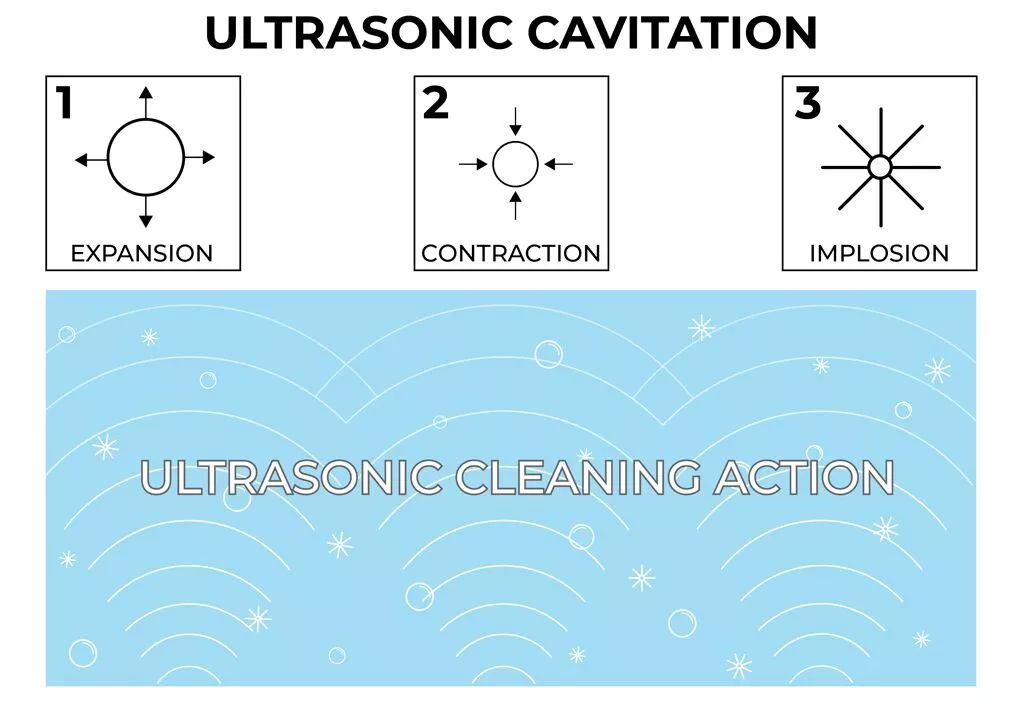Ultrasonic Cleaning
Solder Connection are a distributor of Ultrawave Ultrasonic Equipment. What is Ultrasonic Cleaning and how can it aid your cleaning process?
What is Ultrasonic Cleaning?
Put simply, Ultrasonic Cleaning is the use of sound waves to remove decontamination from surfaces. The part to be cleaned must be completely submerged in a tank of water (the ultrasonic cleaning tank) before the sound waves (ultrasonics) are applied.
Ultrasonic energy is introduced into the body of water via Transducers, these are specifically shaped blocks of metal that sandwich piezoelectric material. Piezoelectric materials have the amazing property of vibrating when an electric current is passed through them, and the transducer harnesses this effect and channels the vibrations through the metal blocks (See below).


How does Ultrasonic Cleaning work?
Ultrasonic energy is introduced into the body of water via transducers, channelling vibrations into a tank through metal blocks. The vibration of the metal tank means the tank effectively emits ultrasonic energy into the body of water. This is the ultrasonic energy which produces the cleaning effect.
Ultrasonic Cavitation: The cleaning effect
The imploding bubbles in the water rapidly create high temperatures and pressures in a tiny space. When the implosions come into contact with the submerged item, the cavitation bubbles act like microscopic scrubbing brushes all over the cleaning tank, removing dirt without necessarily requiring chemicals. The action is miniscule so that it provides a highly effective but gentle clean, avoiding the damage that can be caused when scrubbing items by hand.
The Benefits
- Versatility – Ultrasonic cleaning is effective at removing all kinds of dirt, grease, oil and even bacteria from a part that would otherwise be hard to clean. With the addition of cleaning chemicals specifically tailored to the cleaning requirement then results can be further improved. In addition when the temperature of the water is raised this also have an improved effect on the cleaning efficiency.
- Reduced Effort – Because ultrasonic cleaning submerges the part to be cleaned within a bath of water, anything that the water touches is being cleaned by the ultrasonic action. This means that parts that have been traditionally difficult to clean with crevices, hollows and blind holes will now get the same cleaning action as easy to reach surfaces.
- Automated & Repeatable – It provides a relatively automated and consistent process for the end user because cycle times, heat, chemical additives and ultrasonic power can all be controlled and tailored to customer requirements.
- Energy Efficient – Whilst ultrasonic cleaning does require an electrical power source it is often much more efficient due to the reduced amount of overall water it uses compared to jet washing. An ultrasonic cleaning tank can often accommodate more than one part at a time so efficiencies can be further increased.
All information and imagery provided by Ultrawave. Copyright Ultrawave 2022. – https://ultrawave.co.uk